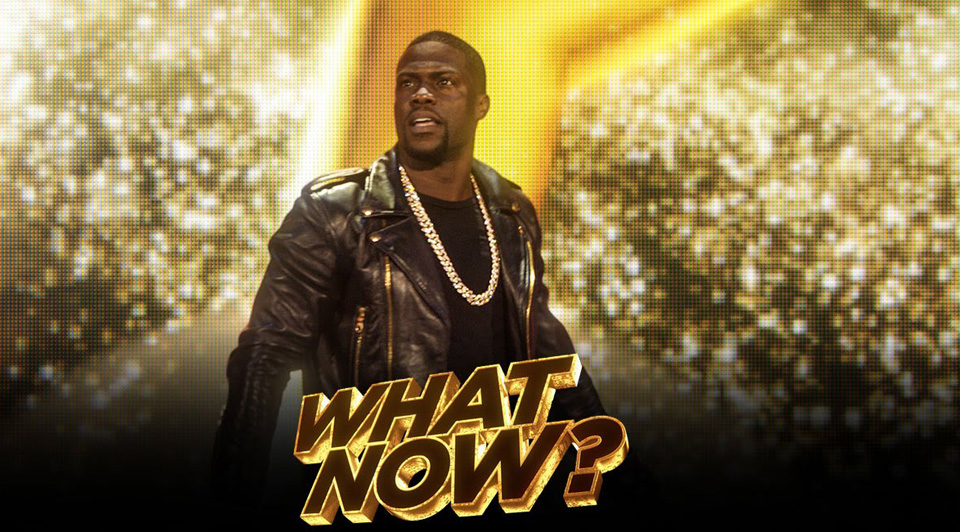
Hey, all you fans of hilarious, often off-color comedy! Head on down to the multiplex to laugh your head off at Kevin Hart: What Now? Much of it is a concert film in the tradition of Richard Pryor and Eddie Murphy’s earlier forays into this category of semi-documentary filmmaking of a live performance by a comedian. However, Hart’s standup routines are wittily sandwiched between an opening credit montage and sequences that are rib-tickling genre spoofs featuring Halle Berry, Don Cheadle and Daily Show and Hangover alum Ed Helms (as a token Caucasian?).
Some inventive sight gags in the opening scene are reminiscent of visualizations Woody Allen previously spoofed, although Hart, who also executive produced What Now? (directed by veteran Hart helmer Leslie Small), does so in an original way. But most of this film is shot in a sports stadium (which I am deliberately not naming in order to avoid giving a corporate plug) where an animated, at all times engaging Hart delivers a number of his routines.
The Philadelphia native first came to prominence in the cast of the Judd Apatow TV series Undeclared. He has since appeared in dozens of films and TV specials. Hart is the several-times winner of BET, MTV, Teen Choice and NAACP entertainment awards.
What is, perhaps, most refreshing about his point of view is that in our macho era of perpetual warfare, a recurring theme in Hart’s manic monologues is cowardice – in particular, open confessions of his own lack of valor. To his credit, the comic also repeatedly cites the virtues of confiding in one’s children and friends, the importance of sharing and intimacy – even if, as he jokes, he wouldn’t rescue them if his own life was endangered.
Hart’s well-delivered standup, accompanied with imagery on the stadium’s jumbo screens, is decidedly of the observational type. His topics are anything but topical. His humor makes light of daily absurdities, including family, friends, ping pong, betting, sex toys, ordering coffee at Starbucks, and the like. There may be one reference to police shootings of African Americans, but whether by design or not, Hart steers clear of political points. Reaction shots of diverse members of the sold-out crowd at the arena reinforce the message that unlike, say, Paul Mooney, Hart is a crossover comic and equal opportunity jester.
He does, however, make fun of people with disabilities, but I hasten to add that they are improbable, made-up types of physical aberrations – unlike Trump, who publicly mocked a disabled reporter. Like Trump, Hart uses lots of vulgarities, including the “N” word. (It’s interesting if not exactly amusing to note that one of the main things Trump will be remembered for if he’s not elected Führer is this vulgarian’s coarsening of our language and discourse. He enabled the so-called “news” media to expand its lexicon to include terms like “bullshit artist” and unleashed a veritable “pussy riot” on what passes for the news.)
Be that as it may, What Now?, opening in theaters Oct. 14, may provide many with an enjoyable refuge where they can escape the insanity of the unfolding presidential debacle for 96 minutes. If most men – and women – live, as Thoreau observed, “lives of quiet desperation,” Hart is a daffy, different drummer whose wit and wisdom should enable them to at least enjoy some noisy, laugh-out-loud moments amidst the madness. To paraphrase Carson McCullers, this Hart is a laughter hunter. In its own way, Kevin Hart: What Now? makes a contribution to the growing cinematic surge of Black-themed films, currently being led by Nate Parker’s brilliant but decidedly unfunny The Birth of a Nation.
Ed Rampell’s interview with Viggo Mortensen appears in the October issue of The Progressive Magazine and his review of “Years of Living Dangerously” is headlined on the cover of Sierra Magazine.










